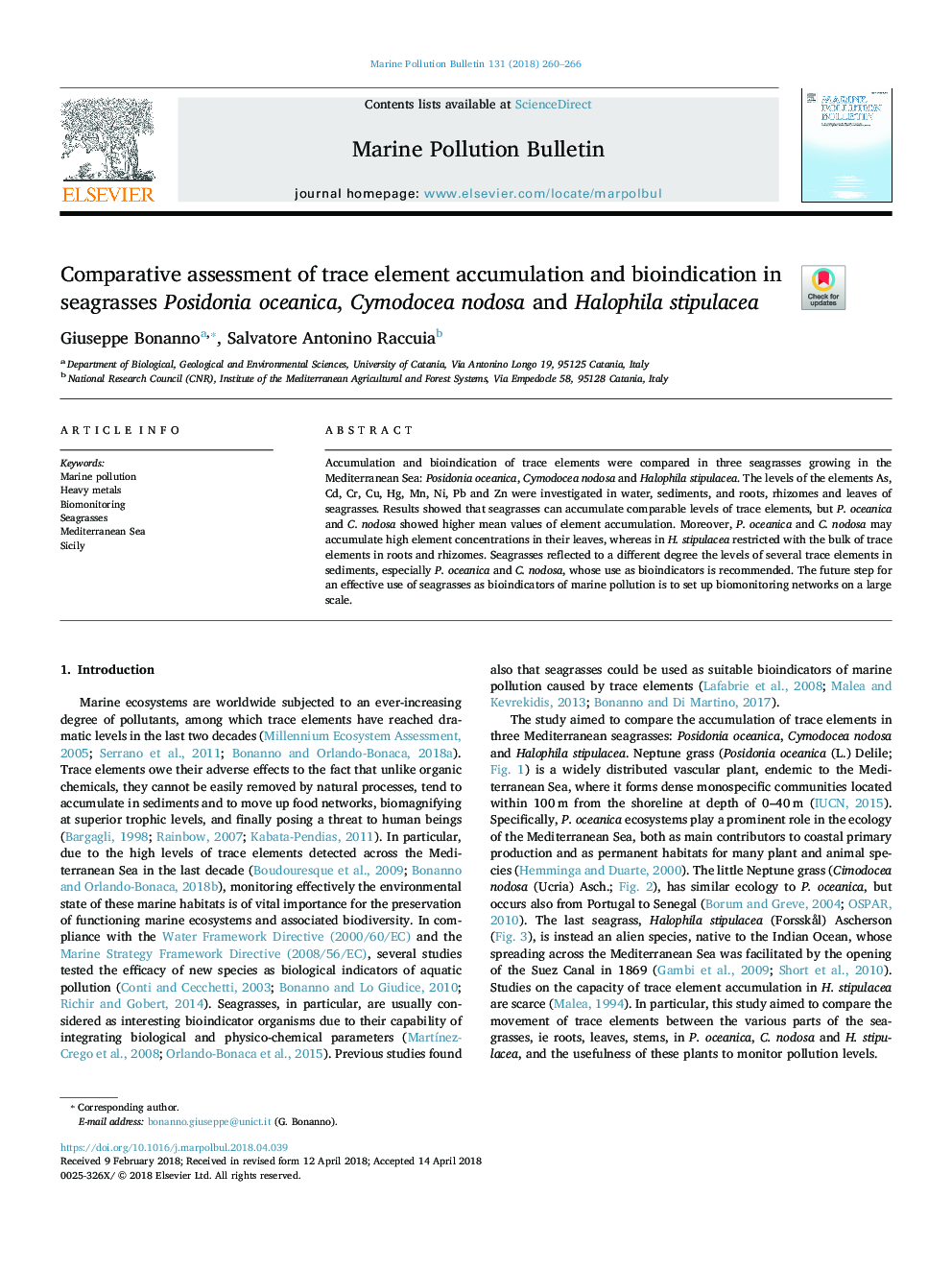| Article ID | Journal | Published Year | Pages | File Type |
|---|---|---|---|---|
| 8870979 | Marine Pollution Bulletin | 2018 | 7 Pages |
Abstract
Accumulation and bioindication of trace elements were compared in three seagrasses growing in the Mediterranean Sea: Posidonia oceanica, Cymodocea nodosa and Halophila stipulacea. The levels of the elements As, Cd, Cr, Cu, Hg, Mn, Ni, Pb and Zn were investigated in water, sediments, and roots, rhizomes and leaves of seagrasses. Results showed that seagrasses can accumulate comparable levels of trace elements, but P. oceanica and C. nodosa showed higher mean values of element accumulation. Moreover, P. oceanica and C. nodosa may accumulate high element concentrations in their leaves, whereas in H. stipulacea restricted with the bulk of trace elements in roots and rhizomes. Seagrasses reflected to a different degree the levels of several trace elements in sediments, especially P. oceanica and C. nodosa, whose use as bioindicators is recommended. The future step for an effective use of seagrasses as bioindicators of marine pollution is to set up biomonitoring networks on a large scale.
Related Topics
Physical Sciences and Engineering
Earth and Planetary Sciences
Oceanography
Authors
Giuseppe Bonanno, Salvatore Antonino Raccuia,
